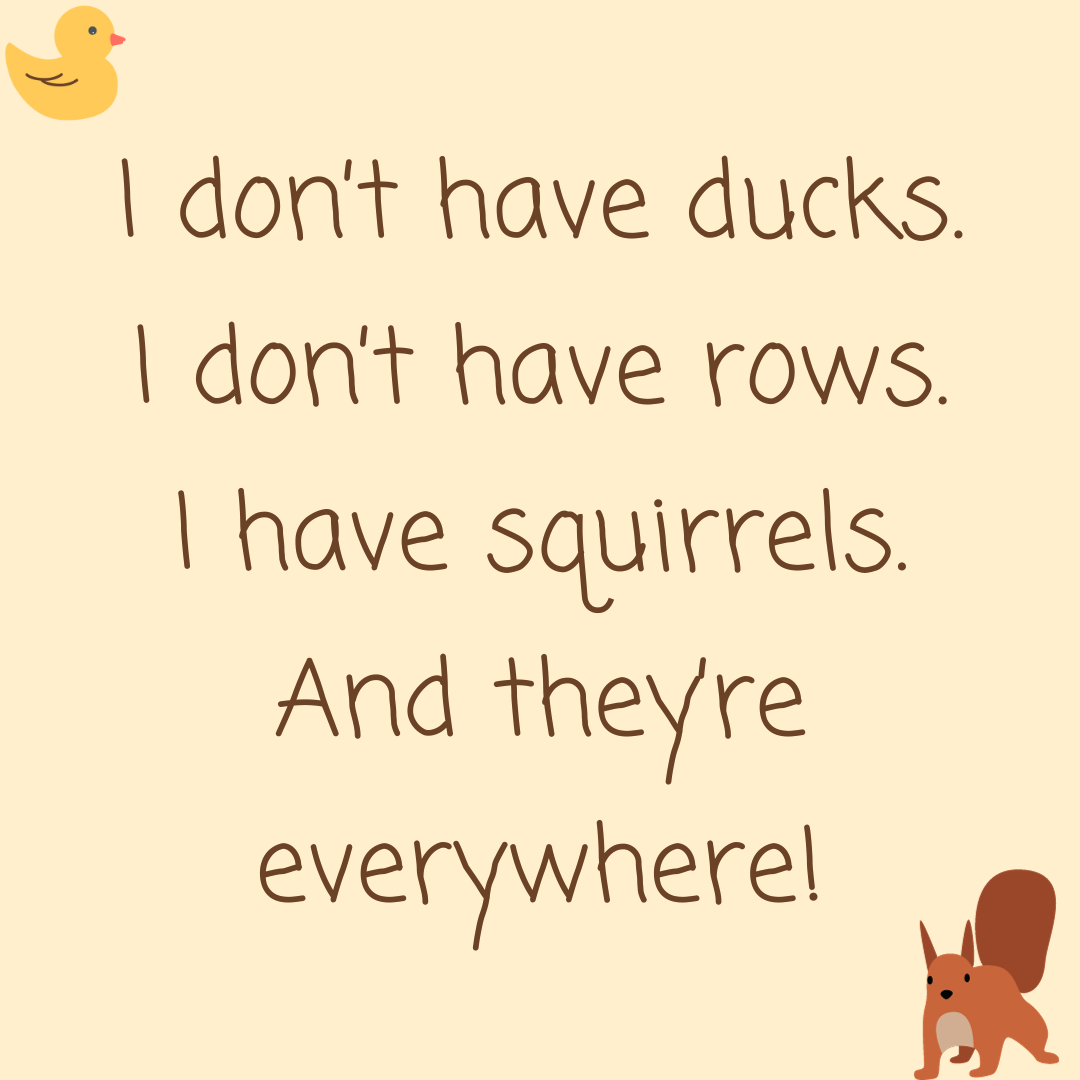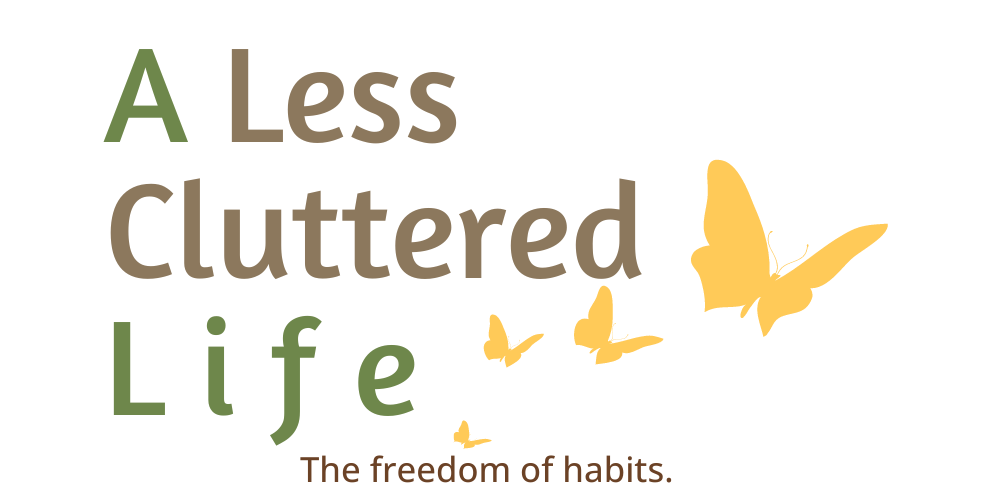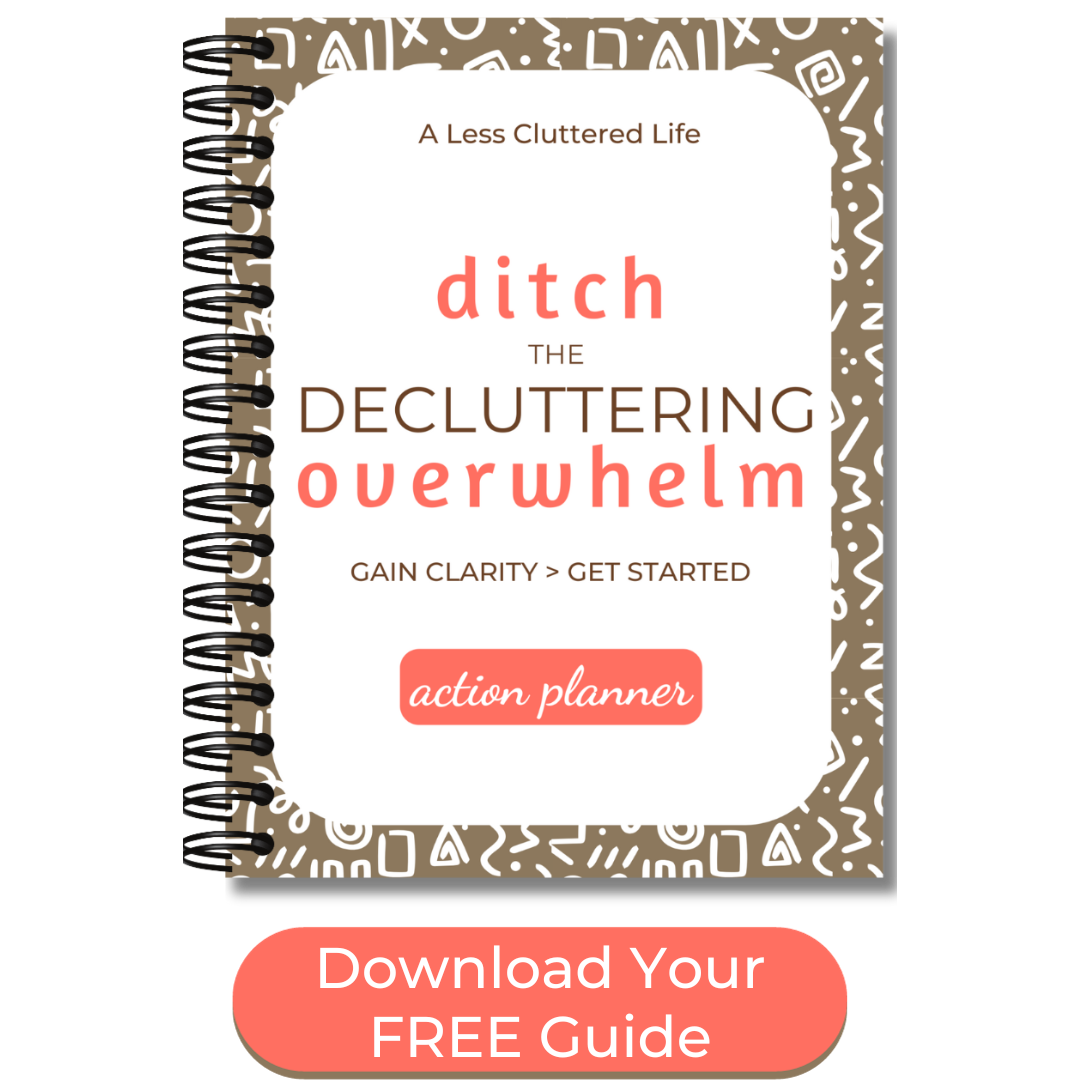|
by Susan McCarthy Do you feel overwhelmed by indecision when trying to declutter your home? When you connect to your goal for getting organized, you gain clarity into the decision-making process, and you’ll have an easier time deciding whether to keep something or let it go. I was staring at the 30 or so scarves piled on my bed, trying to figure out what to do with them. These were accessories for fashion not warmth, in a wide range of colors and shapes. Because some were skinny, others wide rectangles or sarongs, and a few triangular, it was a challenge to keep them organized. I’d gone from simply dumping them in a drawer to folding them into neat, little packets lined up in that drawer to settling each one into a snug space designated by a drawer organizer. The problem was out-of-sight-out-of-mind; I’d forget to go into the drawer to select a scarf to wear with my outfit of the day. I found a scarf organizer that hung like a hanger in the closet, and I’d thought I’d found my solution! When I was in the closet, selecting my outfit, the scarves would be right there. You know what? I still didn’t wear the scarves. And now I was staring at a riot of colors and textures strewn across my bed. It occurred to me (finally) that I used to wear these scarves, but I hadn’t for a few years. Life changed and wearing something with dangling ends that would get in my way every time I bent over was annoying. They’d had their phase, and now it was done. Why had I spent time and money organizing and reorganizing this collection of scarves? Because I forgot to ask an important question – Why – Why am I holding onto this? What's Your 'Why' for Decluttering?One of the things people get caught up on time and again is the fear of decluttering “the right way.” When I became a professional organizer, for a while I thought that this meant clients needed a tutorial on the steps for sorting through their stuff. But, let’s face it, these directions are everywhere – books, online articles, videos. It finally occurred to me that by asking about “the right way” to declutter they really wanted to know that they weren’t going to regret getting rid of that thing from the back of a kitchen cabinet, something they’d even forgot that they had until cleaning through the cabinet brought it into the light. The answer comes from questioning why you’re decluttering –
When I asked, “why am I holding onto all these scarves?” the response was, “what if I want or need to wear one someday?” That seemed like a good enough reason to devote more time and money to reorganizing them (again). Only later did I realize that answering my question with a question didn’t answer the question. (Any questions?) 'Someday' Is about Fear, Not FunctionWhile decluttering, every time I found myself thinking, “what if I need this someday?” I realized that I wasn’t thinking about using the item, I was focused on not having the item. If I’d asked the question, “Why am I holding onto this?” and pushed myself to focus on how I’d use the item instead of focusing on the fear of not having the item, I would have had a truer answer. And why did that matter? The fear of not having my collection of scarves, of thinking “I might wear them someday,” directed me to the wrong conclusion. I focused on storing them, so they’d be available for someday. If, instead, I asked, “Why am I holding onto these scarves?” and focused on their function, accessorizing my outfits, I’d realized that they weren’t getting used this way. Asking 'Why' You Own Something Give You Some Perspective when DeclutteringDecluttering has you deciding what to do with your possessions – keep or let go? Your goal may be to declutter your closet or the kitchen, but it’s your why that will propel you to your destination. When I asked why I was holding onto a collection of scarves, I didn’t have a good answer. I hadn’t been wearing them, so they had no function. Sometimes, you’ll be able to look at a thing and answer the “keep or let go” question with ease. But when there’s hesitation, why helps you see how an item fits into your life. Want more clarity into your reasons for decluttering? Ask a bigger why. Create Your Big 'Why'Your big why is about your reasons for decluttering your home. Instead of thinking, “why am I holding onto this?” you can step back and ask, “why am I ready to let go of my excess stuff?” or “why do I want an orderly home?” If you aren’t certain what your why is, take a moment to visualize what you’d like your life to look like in a year (or six months, or three months or five years). Having trouble visualizing the future? Divide a sheet of paper in half. Along the left-hand column, list things that aren’t working in your life and home. In the right-hand column, describe the opposite of the situation listed in the other column or what you’d prefer to see. Go for specific details. This connects your why to your desire for change. Although you may come up with a why that encompasses your decision and desire to declutter your home, you may also find that you want more specific reasons for tackling your closet or your craft room or your kitchen. When you’re feeling frustrated or overwhelmed by the task, you’ll have a heartfelt reason to keep you moving in the direction you want to go. Go Beyond Your Vision by Listing Action StepsApparently, some researchers have discovered that focusing on your goal as if you have already achieved it actually reduces your motivation. What would cause this to happen? It seems that your brain will take that vision and be all, “woo and hoo, that’s done!” Your brain treats imagining achieving your goal the same way it would deal with achieving your goal in real life. The creative tension diminishes because your brain sees the task as done. So, how do you use visualization without draining your motivation to declutter? Identify the obstacles you could encounter and then think of ways to overcome those roadblocks. (Curious about this research and the WOOP solution – wish, outcome, obstacle, plan – read more here.) When you’ve visualized your organized home, consider some of the issues that could get in your way (not knowing if you will use something again, few items selling at a yard sale, the charity you wanted to donate to not taking the items you have). Then, think of what else you could do to get to your goal. (Box an item for a few months to see if you miss it, giving away items after the yard sale, having a backup charity in mind). This isn’t negative thinking but proactive thinking. it anchors and grounds the vision you have for your home. "Why Am I Holding onto This Item?"While decluttering focuses on what you’re getting rid of, here’s another way to look at this process – it highlights what you’re keeping (and chances are that’s something important to you – something you use or enjoy; or connect to a part of your identity, a person you cared for, or a memory). This idea makes me think of the Michelangelo quote, “I saw the angel in the marble and carved until I set him free.” Decluttering sets you free. You free yourself from the burden to return to a past interest just so you can use the stuff you held onto. You free yourself from unrealistic expectations to read that, do this, aspire to that other thing. If you use, enjoy, and connect to something, when you ask, “Why am I holding onto this item?” you know how to answer that question. When you waffle and think, “I should hold onto this just in case someone needs it someday,” that indecision is masking fear. Not that fear is unjustified. You don’t want to make a snap decision that you’ll regret. But when you tell yourself that you’ll hold onto something ‘just in case,’ you know you don’t use or enjoy this item. Can you accept that you know this item is unnecessary? Ask Big 'Why's and Little 'Why'sHow you word your why question – and the answers that follow, can change depending on what you’re decluttering. Also, as you declutter, you may find your why shifting or becoming clearer. And that’s okay. More than okay. That’s great. See, this little question makes it easier to declutter your stuff.
Whenever you find yourself hesitating over keeping or letting go of something, you can ask yourself whatever why question brings you back to your reason for doing the task.
Your answer will tell you why you’re keeping something or why you’ve decided to let it go. Are you focusing on your vision for an organized home or room? Are you viewing an item through its function in your life (and even decorative items can have a function) or through your fear of not having the item just in case you need it someday? Asking why not only connects you to your goal, but it also eliminates the question if you are decluttering “the right way.” Answering why tells you that you are. This is why the Less Clutter Roadmap starts your decluttering journey with Clarity. Download your free copy here.
0 Comments
Your comment will be posted after it is approved.
Leave a Reply. |
Categories
All
Hi, I'm SusanI'm a former teacher who became a professional organizer (and not because I'm a natural-born neatnik). I live with my husband and fluffy cat on a river in Massachusetts. I crochet, make handmade cards, and love reading young adult novels. Learn more about my decluttering journey here. |
|
Copyright 2024 Susan McCarthy - Susan@ALessClutteredLife.com -
Privacy Policies |
Proudly powered by Weebly

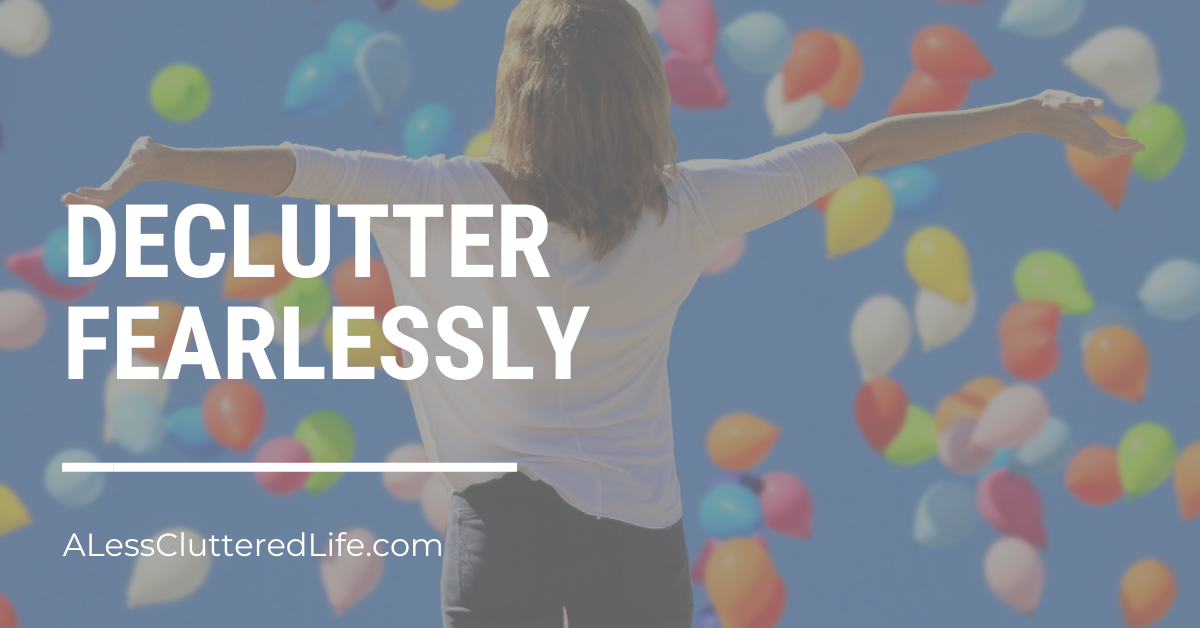
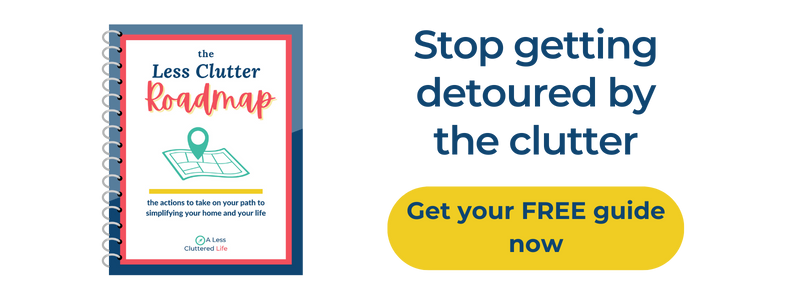
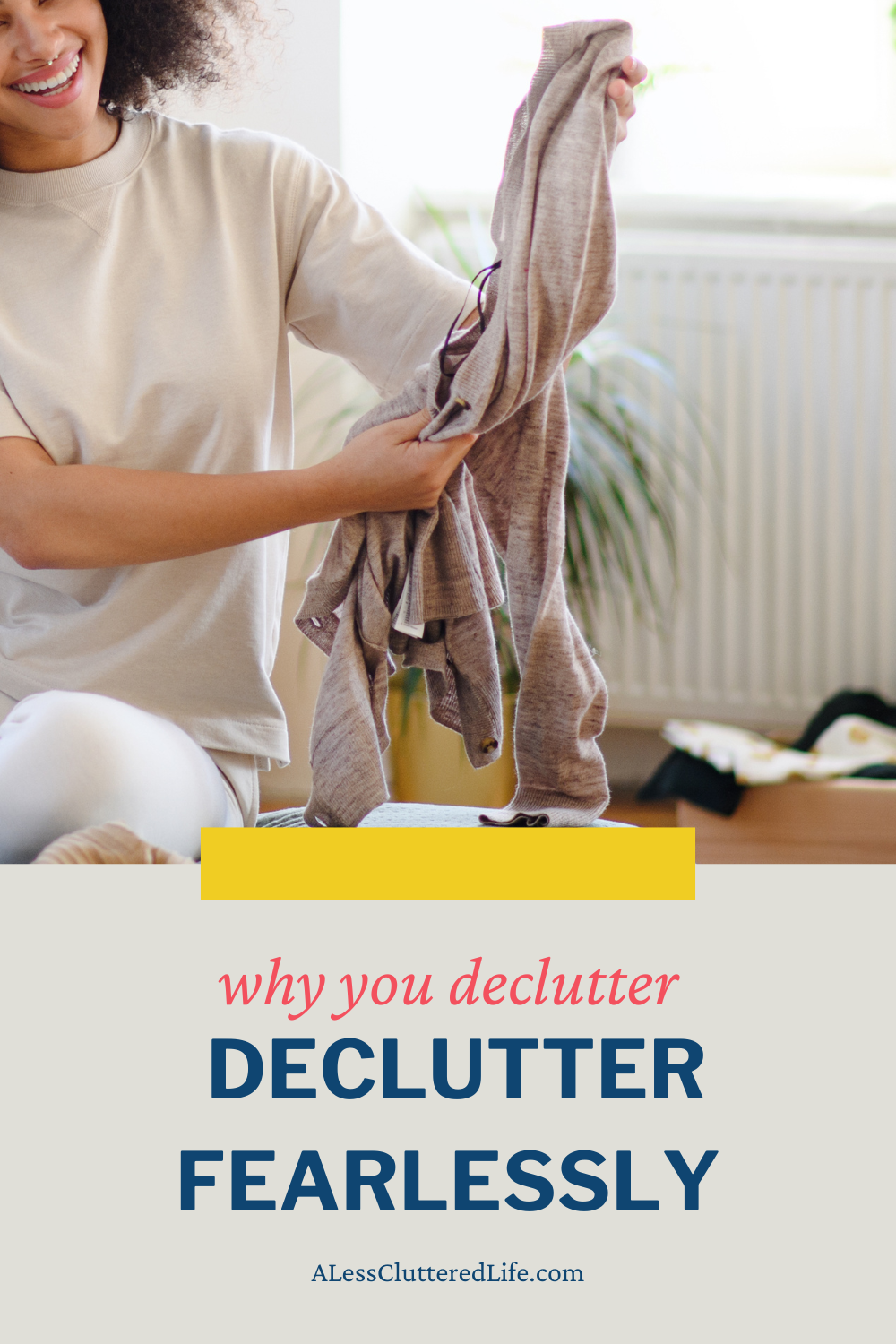
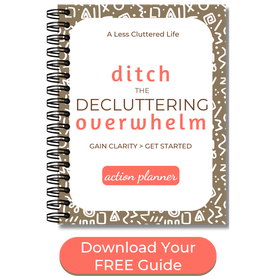

 RSS Feed
RSS Feed
